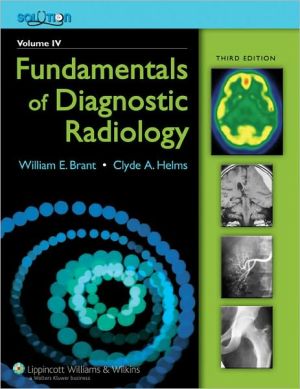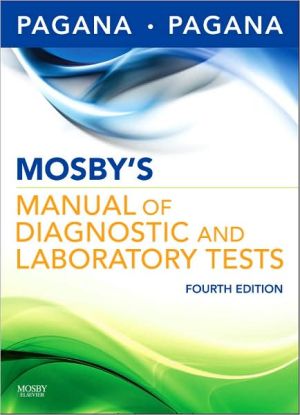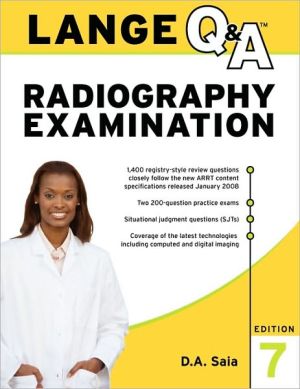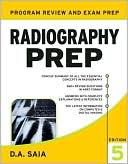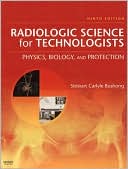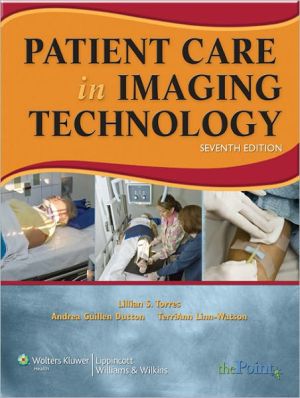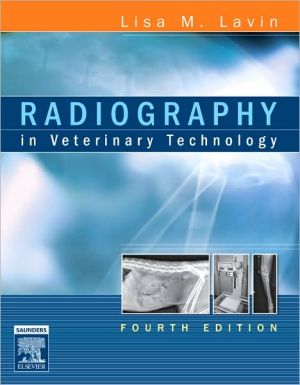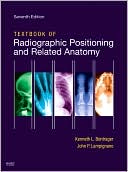Fundamentals of Diagnostic Radiology 4 Vol Set
The Brant and Helms Solution gives you a complete print and multimedia package consisting of the textbook, Fundamentals of Diagnostic Radiology, Third Edition, plus instant access to a brand-new interactive resource that keeps your radiology skills up-to-date.\ For your bookshelf—Fundamentals of Diagnostic Radiology, Third Edition. This fully updated classic guides you through the application and interpretation of all imaging modalities and is a comprehensive review of radiology that can be...
Search in google:
The Brant and Helms Solution is a complete print and multimedia package consisting of Fundamentals of Diagnostic Radiology, Third Edition plus a brand-new interactive resource that keeps radiologists' skills up-to-date.The book is a comprehensive radiology review that can be used as a first reader by beginning residents, referred to during rotations, and used to study for the American Board of Radiology examinations. It covers all ten subspecialties of radiology and includes over 2,700 illustrations. This edition features expanded and updated coverage of all sections; many new illustrations and tables; expanded coverage of multi-slice CT; and new bone imaging modalities. This edition is available as a hardbound single-volume textbook or a softbound four-volume set.The Website features fully searchable content from the book; a downloadable image bank containing all images from the text; continuously updated imaging cases; a test bank with questions from the brand-new Review of Fundamentals of Radiology; and a fully searchable anatomy library of high-resolution radiologic images. Frederick L. Hoff This textbook attempts to condense all of radiological interpretation, including ultrasound, MRI, CT, and nuclear medicine into a single volume. The intent of the book is to serve as a ""first reader"" for those embarking on a career in radiology. The authors suggest that it could serve also as a ""last reader"" for residents before radiologic board examinations. The book does provide a good framework on which to build a working knowledge base, although I suspect most finishing residents will find it too basic. The intended audience includes radiology residents and perhaps medical students who are interested in radiology. Few others would be interested. The authors are well known and respected in radiology. Although the volume itself is very attractive and well organized (finding any topic is therefore quite easy), it is fairly large and heavy. Perhaps because it is a first edition, many pages are underutilized, with large blank areas. The reference quantity and quality vary markedly by section. Some chapters include suggested readings and some are referenced citing articles that, although important with regard to a certain fact, are not the best place for the resident to turn to next. This is a good introductory textbook. The quality varies somewhat from section to section, as is typical of many large multiauthored books. This variation may be accentuated by the natural comparison to other texts in the same market that have been through many editions. Unfortunately, diagnostic imaging may well be too large a field to condense into one volume. By attempting to include so much, individual subjects get shortchanged.
Foreword to the Second EditionForeword to the First EditionPreface to the Second EditionPreface to the First EditionContributorsList of TablesList of Universal AbbreviationsSect. IBasic Principles1Diagnostic Imaging Methods3Sect. IINeuroradiology2Introduction to Brain Imaging253Craniofacial Trauma494Cerebrovascular Disease795Central Nervous System Neoplasms1136Central Nervous System Infections1437White Matter and Neurodegenerative Diseases1698Pediatric Neuroimaging1879Head and Neck Imaging21110Nondegenerative Diseases of the Spine23311Lumbar Spine: Disc Disease and Stenosis281Sect. IIIChest12Methods of Examination and Normal Anatomy29113Mediastinum and Hila31914Radiographic Findings in Chest Disease34315Pulmonary Vascular Disease36316Pulmonary Neoplasms37717Pulmonary Infection40118Interstitial Lung Disease41519Airways Disease44120Pleura, Chest Wall, Diaphragm, and Miscellaneous Chest Disorders457Sect. IVBreast Radiology21Breast Imaging491Sect. VCardiovascular Radiology22Cardiac Anatomy, Physiology, and Imaging Modalities52523Cardiac Imaging in Acquired Diseases54924Vascular Radiology57125Interventional Radiology615Sect. VIGastrointestinal Tract26Abdomen and Pelvis65127Liver, Biliary Tree, and Gallbladder66928Pancreas and Spleen69129Pharynx and Esophagus70730Stomach and Duodenum72331Mesenteric Small Bowel73732Colon and Appendix751Sect. VIIGenitourinary Tract33Adrenal Glands and Kidneys76934Pelvicalyceal System, Ureters, Bladder, and Urethra79335Genital Tract815Sect. VIIIUltrasound36Abdomen Ultrasound83137Genital Tract and Bladder Ultrasound85938Obstetric Ultrasound88139Chest, Thyroid, Parathyroid, and Neonatal Brain Ultrasound90740Vascular Ultrasound923Sect. IXBones and Joints41Benign Cystic Bone Lesions96142Malignant Bone and Soft-Tissue Tumors98143Skeletal Trauma99744Arthritis102545Metabolic Bone Disease104946Skeletal "Don't Touch" Lesions106147Miscellaneous Bone Lesions107348Magnetic Resonance Imaging of the Knee108349Magnetic Resonance Imaging of the Shoulder109350Magnetic Resonance Imaging of the Foot and Ankle1099Sect. XPediatric Radiology51Pediatric Chest111152Pediatric Abdomen and Pelvis1157Sect. XINuclear Radiology53Introduction to Nuclear Medicine120554Essential Science of Nuclear Medicine120955Skeletal System Scintigraphy122756Pulmonary Scintigraphy123957Cardiovascular System Scintigraphy125358Endocrine Gland Scintigraphy126959Gastrointestinal, Liver-Spleen, and Hepatobiliary Scintigraphy128160Genitourinary System Scintigraphy129361Scintigraphic Diagnosis of Inflammatory Processes130562Scintigraphic Tumor Imaging131763Central Nervous System Scinitigraphy1333Index1345
\ From The CriticsReviewer: Lisa Diethelm, MD(Ochsner Clinic Foundation)\ Description: This has become the classic basic text in diagnostic imaging. This is the softcover version of the third edition, published in hardcover in 2006. Both versions include free access to the associated website.\ Purpose: The purpose is to provide a comprehensive yet concise overview of diagnostic radiology that is useful both as an introduction and as a review. It succeeds superbly in this endeavor. For the first edition 14 years ago, the authors were chosen for their authority and their youth in part to ensure that the book reflected topics germane to residents and board examinees. Many of the original authors have continued to contribute to subsequent editions, including this one. They remain authorities in their areas of specialization and maintain a youthful outlook even as they approach middle age. The website indicates plans for additional functions but is not yet complete.\ Audience: The book is useful to medical students, residents, radiologists who teach residents or who require a broad overview of a topic, and clinical physicians interested in an introduction to or overview of a topic. \ Features: Volume I introduces basic principles and includes all neuroradiology (chapters 1 - 11). Volume II is devoted primarily to chest imaging, including breast and cardiac imaging (chapters 12 - 23). Volume III includes vascular and interventional radiology and ultrasound (chapters 24 - 40), as well as all color illustrations. Volume IV covers musculoskeletal imaging, pediatric radiology, and nuclear medicine. The table of contents in volume I is in the usual location while in the other three volumes, a table of contents for the sections is located on the inside of the front cover; in none of the tables of contents is there information detailing the contents of a particular volume. The index appears only in volume IV; inclusion of a copy of the index in each volume would be extremely helpful. This organization limits the accessibility of the information. Currently, the associated website has some limitations. Using the access code provided in the front of the book, I was unable to register on the website and was further confounded by the 14 digits in my access code versus the instruction to input a 12-digit code. Nonetheless, within 36 hours of my email request for help, customer service sent me a new access code (also 14 digits) which allowed me to register successfully. The FAQ indicates that access via current registration will be active until the next edition becomes available, projected at four years. The website includes all the text and images plus extra cases. While the site is advertised as including images with annotation of anatomic structures plus materials to be used in studying for ABR boards or recertification, those parts of the site are not yet active. Although the FAQ indicates that the site is updated monthly, the date for activation of these elements is not proposed or projected. A search engine is provided to locate various topics, presumably in lieu of the index, but it is crude compared to Google or even the engine used on eBay, a retail website Simple Boolean searches are possible but the results are often too numerous ( >50) or insufficiently specific. Bibliographies appear at the end of chapters; some of the entries include active links to recent papers in journals with open archives (e.g. Radiology, Circulation), others include links to Medline citations, and still others are in unlinked text partly as the result of limited access to certain journals (e.g. American Journal of Neuroradiology, Journal of Thoracic Imaging), but the absence of active links for references in AJR, a journal with open archives, is perplexing. It should also be noted that the font and other visual features of the web-based text is not as easy to read as the text on some other sites, an increasingly significant consideration for those with middle-aged eyes.\ Assessment: "This book is a classic. It succeeds admirably as an introduction to various topics in radiology, and as an overview or review for radiologists preparing for ABR boards or recertification or who wish a quick review of a topic prior to more intensive investigation. This four-volume softcover edition is practical, less cumbersome than the single volume hardcover version, but suffers from the absence of information in each volume that would make it easier to navigate. It is reasonable to expect that future editions will provide this information. The associated website, an innovative feature, suffers from glitches in access codes, incomplete contents, and a marginal search engine. Although the web-based text is authoritative, I have discovered that when residents search for information on the web they often prefer e-medicine which, although less current for some topics, is free and easier to access than this one. Residents also appear to prefer to use Google to search for references rather than using the bibliographic citations at the end of the chapters, which is regrettable because the references have been specifically chosen for their classic and current value, and speaks to the difficulty of linking references to the original papers. The printed book justifies the purchase price, but the value of the four-volume softcover is diluted by the limitations of the index and table of contents. "\ \ \ \ \ Frederick L. HoffThis textbook attempts to condense all of radiological interpretation, including ultrasound, MRI, CT, and nuclear medicine into a single volume. The intent of the book is to serve as a ""first reader"" for those embarking on a career in radiology. The authors suggest that it could serve also as a ""last reader"" for residents before radiologic board examinations. The book does provide a good framework on which to build a working knowledge base, although I suspect most finishing residents will find it too basic. The intended audience includes radiology residents and perhaps medical students who are interested in radiology. Few others would be interested. The authors are well known and respected in radiology. Although the volume itself is very attractive and well organized (finding any topic is therefore quite easy), it is fairly large and heavy. Perhaps because it is a first edition, many pages are underutilized, with large blank areas. The reference quantity and quality vary markedly by section. Some chapters include suggested readings and some are referenced citing articles that, although important with regard to a certain fact, are not the best place for the resident to turn to next. This is a good introductory textbook. The quality varies somewhat from section to section, as is typical of many large multiauthored books. This variation may be accentuated by the natural comparison to other texts in the same market that have been through many editions. Unfortunately, diagnostic imaging may well be too large a field to condense into one volume. By attempting to include so much, individual subjects get shortchanged.\ \ \ BooknewsNew edition of a text that captures the essentials of diagnostic radiology and incorporates the broad range of technologic advances that have occurred during the past decade. Sixty-three chapters cover basic principles; chest, breast, pediatric, cardiovascular, and nuclear radiology; gastrointestinal and genitourinary tracts; bones and joints; and ultrasound. Generously illustrated in b&w. Annotation c. by Book News, Inc., Portland, Or.\ \ \ \ \ 3 Stars from Doody\ \
